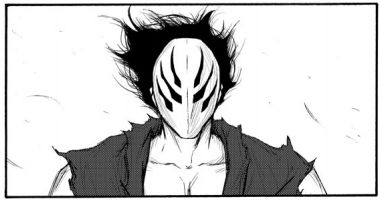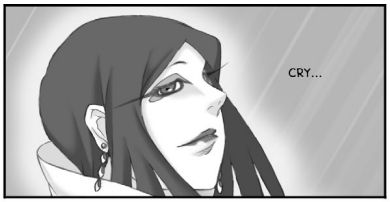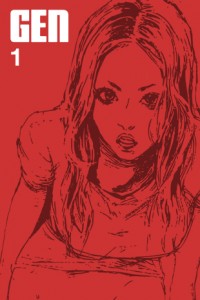Gen Manga Issue 1 Review
New York City based independent publisher Gen Manga Entertainment has made its first step into the exciting but tenuous waters of original manga publishing with the first issue of its original manga anthology Gen issue 1. The premiere digital issue is 71 pages presented in PDF format (the equivilant of 142 print pages) containing four original manga stories from independent Japanese artists. Unlike typical manga published initially in Japan then exported to America, the stories contained within Gen Manga are created specifically for Gen and published first with translated English dialogue.

Underneath an attractive cover drawn by Yousuke Abe, Gen Manga issue 1 begins with perhaps its strongest entry, Nakamura Shige’s “Wolf.” Drawn with a simplified graphic style that recalls the work of Osamu Tezuka, Shotaro Ishinomori, and Tetsuya Chiba, “Wolf” sets up a dual sports story about two young men that come to Tokyo to persue their dreams: one to become a sumo wrestler, the other to avenge himself upon his distant boxing champion father. While the art design is relatively simple, dynamic use of speed lines, sound effects, and screentones enliven the art, creating a sense of motion and activity that effectively compliments the minimalist art design. The narrative is very much an initial introduction to the primary characters and their circumstances, but it develops with a natural pace that effectively allows readers to get to know the characters. Readers used to or expecting the distinctive quirks and lighthearted nuances of contemporary, mainstream manga may find this retro story a bit slow. But readers comfortable with a diligent, if slightly conventional, manga drama should have little complaint.

Yu Suzuki’s “VS Aliens” channels a much more contemporary tone with a familiar school setting and a slightly off-kilter mystery in the vein of tales including Denpa Onna to Seishun Otoko and Iriya no Sora, UFO no Natsu. The drawings of cute female characters Aya Segawa and Sana Sakuma are consistently attractive and detailed, but male protagonist Kitaro is drawn with a simple, impressionistic design that looks like mid-80’s American attempts at mimicing Japanese character design. The narrative development is likewise a bit compromised. While the story concept of a schoolgirl who just realizes that she may be an alien seems intriguing and ripe for development, the narrative rushes forward through three short chapters without taking adequate time to solidly establish its character personalities. So character interactions and decisions seem inconsistent. “VS Aliens” both looks and feels as much like a contemporary Japanese comic story as an American attempt to emulate Japanese manga style, which may intrigue some readers and frustrate others.

Mihara Gunya’s fantasy adventure tale “Kamen,” is the book’s most intriguing story in part because it’s the shortest contribution to the collection. Like Utawarerumono without the girls, “Kamen” introduces a mysterious man who wakes with a sentient mask covering his face. He encounters a small traveling bad of aggressive soldiers transporting what appear to be slaves, and the manga installment ends. The art design of “Kamen” resembles a simplified Hiroaki Samura, which creates an interesting and confident personality for the art. Like all of the stories in Gen issue 1, backgrounds are minimal, but careful blocking and panel layout give “Kamen” a more accomplished, effective, and cinematic look and feel than its compatriot stories. However, a relatively minimal use of sound effects and the story’s conscious panel blocking create a striking but noticably static feel that lacka a strong sense of motion, liveliness, and energy. The story that’s presented seems interesting, but ultimately what’s presented is too little to base a judgement upon.

Karino Arisa’s entry “Souls” plays out a bit like a female version of the Mononoke anime series, introducing a mysterious female traveler who perceives spirits. The art design makes extensive use of screentones to create a lush visual depth, but the effect is weakened by poor character designs that frequently exhibit a weak sense of proportion. The background design is reminiscent of a simplified Hiroya Oku design style. Lots of sharp, stright lines and negative spaces create a palpably sterile and artifical impression that doesn’t seem intentional as it clashes with the rustic setting and narrative theme. This concluding story also suffers from distracting technical weaknesses including difficult to read black text on black backgrounds, and spelling errors in the translation including “nonsense” spelled “nonsence,” “trapped” spelled as “rapped,” and “lent” instead of “lend.” The story then ends extremely abruptly, before developing its characters and story enough to draw in readers and before establishing whether “Souls” is a complete story or the first chapter of a longer narrative.
The digital presentation of Gen Manga issue 1 is solid. The shaded monochrome art is vivid and crisp. Lettering is usually clear and easy to read. The English translation, apart from some minor errors in the fourth story, is natural and organic with honorifics translated into natural English equivilants when necessary. Japanese sound effects and langauge graphics are kept intact with footnote translations. The stories are published in authentic Japanese right-to-left format.
Readers used to and expecting the professional polish of professionally serialized Japanese manga may find the entries in Gen Manga issue 1 amateurish or unfulfilling. However, as examples of authentic grassroots Japanese manga brought to American readers, the variety of narratives and art styles contained within Gen issue 1 is diverse and respectable. For its very reasonable price – in fact, the first issue is free – Gen Manga issue 1 more than sufficiently proves its value as an interesting and entertaining window into contemporary Japanese manga culture. Publisher Robert McGuire and his staff have done an admirable job of assembling an eclectic selection of original Japanese manga for American readers, and this sort of bleeding edge innovation deserves support.
Add a Comment
You must be logged in to post a comment.




Wow. Your a very god critic for artwork details for the GEN issues. I think GEN Manga from the little have seen is doing a pretty good job.
Those used to more mainstream manga might still find it amateurish but it is a lack of them truly experimenting here. Too bad really. Some very strong stories and artwork to be had.